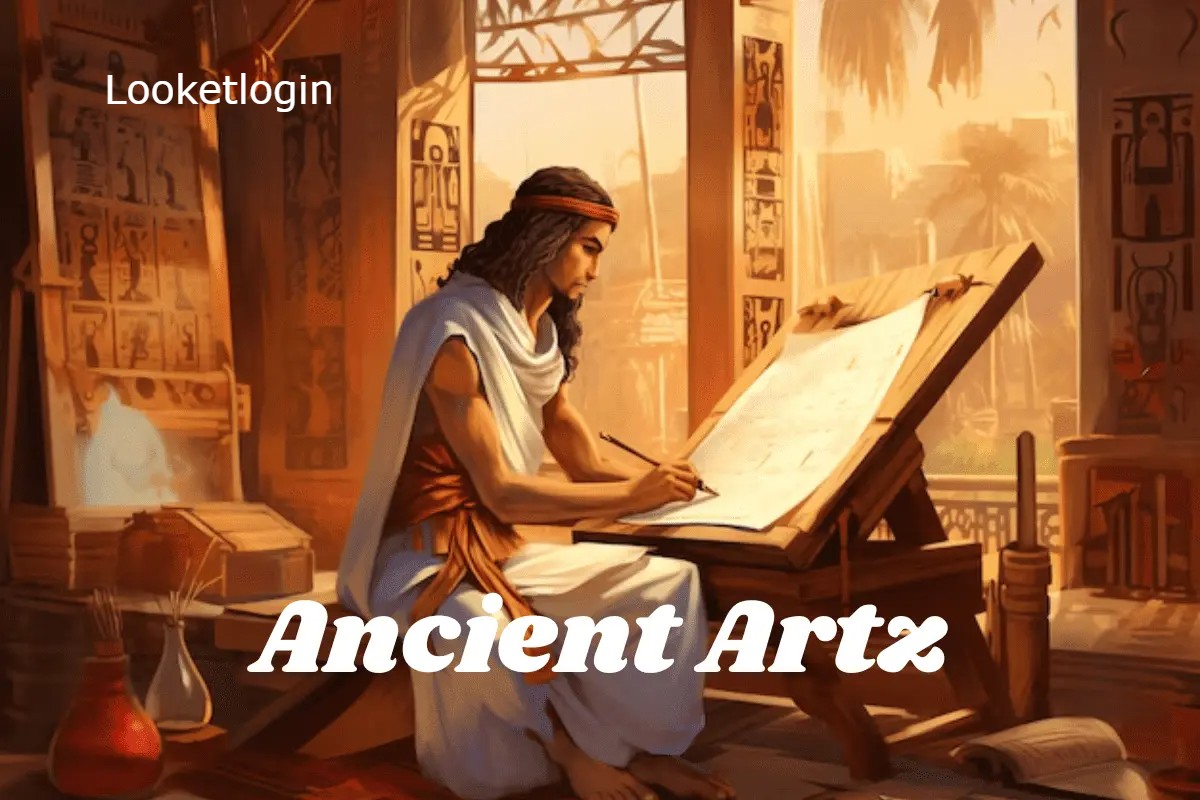Art has always been a reflection of culture, emotion, and human experience.
It connects us to our past, allowing us to explore different civilizations, beliefs, and practices.
One fascinating aspect of this connection is how Ancient Artz the art forms created by ancient civilizations continues to shape and influence modern art.
From the earliest cave paintings to intricate sculptures and architectural wonders, the art produced by ancient societies has left a lasting impact on the artistic traditions of today.
In this blog post, we will explore how Ancient Artz shapes modern art by examining its techniques, styles, and themes.
We will also look at how ancient artworks have influenced contemporary artists and how ancient art continues to inspire and inform modern creativity.
What is Ancient Artz?
Before we dive into the specifics of how Ancient Artz influences modern art, it’s important to understand what “Ancient Artz” refers to.
Ancient art includes artworks created by early civilizations such as the Egyptians, Greeks, Romans, Mesopotamians, Mayans, and many others.
This category encompasses various art forms including painting, sculpture, pottery, textiles, and architecture.
These ancient artworks served many purposes from religious rituals and ceremonial purposes to commemorating rulers and celebrating everyday life.
What makes them so impactful is the way they visually express human history, beliefs, and cultural values.
Many of these pieces have survived thousands of years, offering us a glimpse into the distant past.
The Techniques of Ancient Artz
One of the ways Ancient Artz continues to shape modern art is through its techniques.
Ancient artists mastered different materials, methods, and tools that allowed them to create breathtaking works of art.
Some of these techniques have been passed down through generations and are still used by contemporary artists today.
1. Use of Color and Pigments
In ancient art, the use of color was not just for decoration but often had symbolic meanings.
For example, Egyptian art made use of vibrant colors to convey different attributes gold for the divine, blue for the heavens, red for chaos, and so on.
Ancient Roman and Greek artists also used vivid pigments in their murals and frescoes.
Modern artists often draw inspiration from these vibrant color choices.
The idea of using color symbolically or in a bold, intentional way can be seen in movements like Expressionism, where colors are used not just for aesthetic purposes, but to convey emotion and psychological depth.
2. Sculpture and Form
The ancient civilizations of Greece and Rome are perhaps best known for their incredible sculptures.
Artists like Phidias, Praxiteles, and Michelangelo (during the Renaissance, a period heavily influenced by Greek and Roman ideals) focused on perfecting the human form.
Their sculptures were meticulously detailed, with attention to proportion, balance, and anatomy.
Modern sculptors like Auguste Rodin and Henry Moore were deeply influenced by these ancient techniques, focusing on human anatomy and the power of the human figure.
Many of today’s most prominent sculptors still use similar methods to create works that explore the human body and its emotional expression.
3. Mosaic and Tile Work
Ancient civilizations like the Romans, Greeks, and Byzantines were known for their mosaic work, using small pieces of stone, glass, or ceramics to create intricate designs.
These artworks could cover floors, walls, and ceilings and were often used in temples, villas, and public buildings.
In modern times, mosaic art has enjoyed a resurgence, especially in the realm of street art and interior design.
Contemporary artists such as Pablo Picasso and Antoni Gaudí were influenced by these ancient techniques, and many modern mosaics draw from ancient traditions in their vibrant patterns and designs.
4. Architectural Influence
Ancient architecture continues to influence modern design, especially in the form of columns, arches, and domes.
Greek and Roman architecture, in particular, emphasized symmetry, proportion, and the use of durable materials such as marble.
These principles have carried over into modern architectural movements like Neoclassicism, which took inspiration from ancient Greek and Roman designs.
Buildings like the United States Capitol and the British Museum are direct examples of how Ancient Artz influenced modern architecture.
These structures incorporate columns, porticos, and grand facades, echoing the majestic designs of ancient temples and public buildings.
Symbolism in Ancient Artz and Its Impact on Modern Art
Ancient Artz was often deeply symbolic.
The ancient Egyptians, for instance, used art to express their religious beliefs, the afterlife, and the power of the pharaohs.
In the ancient world, art was not just about visual beauty it had a functional, ceremonial, and spiritual purpose.
Modern art continues to use symbolism to communicate complex themes and ideas.
For example, artists like Salvador Dalí and René Magritte employed surrealism to evoke symbolic meanings through their strange, dream-like images.
The use of symbolism in Ancient Artz has taught contemporary artists to think beyond the literal and to communicate abstract concepts through imagery.
Additionally, the use of mythological subjects in ancient art still resonates today. Ancient Greeks and Romans often depicted gods, heroes, and mythical creatures in their artwork.
These themes have inspired countless artists over the centuries, including Renaissance painters like Botticelli and modern surrealist artists.
How Ancient Artz Inspires Contemporary Artists
Many contemporary artists find inspiration in the art of ancient civilizations.
Whether it’s the grandeur of ancient Egyptian tombs or the intricate pottery of the Greeks, Ancient Artz provides a rich source of material for artists looking to explore new themes, techniques, and styles.
Let’s explore how some modern artists are drawing from the past.
1. Reviving Ancient Techniques
Contemporary artists are rediscovering ancient techniques and incorporating them into their work.
For example, the revival of encaustic painting a technique where pigments are mixed with hot wax has been practiced since ancient Egypt.
Modern artists are now experimenting with this ancient medium to create rich textures and color effects.
Similarly, the use of fresco painting, which dates back to the ancient Greeks and Romans, is seeing a resurgence.
Today’s artists are adapting this technique to create large-scale murals that echo the classical works of antiquity.
2. Reinterpreting Ancient Myths
The myths and legends of ancient cultures continue to inspire artists. From Greek mythology to ancient Egyptian tales, modern artists often reinterpret these stories through their lens.
Artists like Jean-Auguste-Dominique Ingres and J.M.W. Turner were deeply inspired by ancient myths, often bringing them to life through dramatic depictions of gods, heroes, and epic battles.
In contemporary art, these ancient myths are being reinterpreted to reflect modern-day concerns.
For instance, artists might explore themes of power, fate, or identity by referencing figures like the Greek god Apollo or the Egyptian goddess Isis, offering fresh interpretations of these timeless myths.
3. Incorporating Ancient Aesthetics
Ancient art often had a distinctive aesthetic clean lines, geometric patterns, and symmetry were common features.
Modern designers and artists continue to use these principles in everything from graphic design to architecture.
The minimalist style of modern art often echoes the clean, simple lines seen in ancient pottery and architecture.
For example, the simple geometric patterns seen in ancient Greek ceramics have influenced contemporary interior design, especially in the form of decorative tiles, rugs, and wall patterns.
The Lasting Legacy of Ancient Artz
What makes Ancient Artz so enduring is its timelessness.
Ancient artists were able to create works that not only spoke to their own culture but also transcend their time and place.
These artworks continue to resonate with people today because they address universal themes such as life, death, love, and the struggle for meaning.
Modern artists can draw on this vast repository of ideas and techniques to create new works that connect us with our past while also pushing the boundaries of what art can represent.
By blending the old with the new, contemporary artists keep the essence of Ancient Artz alive.
Conclusion
The influence of Ancient Artz on modern art is undeniable.
From the techniques used in painting and sculpture to the symbolic meanings embedded in ancient works, the legacy of ancient civilizations continues to shape the way we create and understand art today.
As contemporary artists explore new mediums, styles, and narratives, they draw on the ancient past for inspiration, using its timeless themes and techniques to create fresh interpretations of the world around us.
Whether through architecture, sculpture, or painting, Ancient Art remains a wellspring of creativity that continues to shape the landscape of modern art.
In the end, the power of Ancient Artz lies in its ability to connect generations. The stories, techniques, and ideas of ancient civilizations resonate with modern audiences, bridging the gap between the past and the present.
Through the lens of Ancient Artz, we can better understand our own culture, creativity, and the human experience across time.





